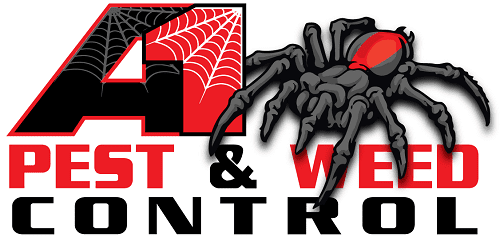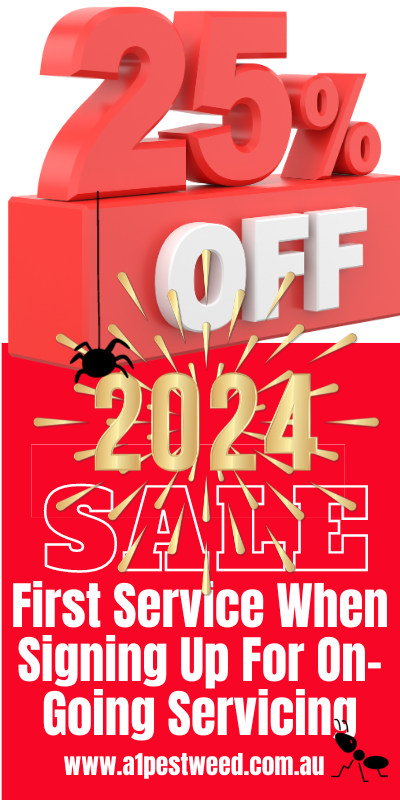Pioneering Pest Control: Demystifying Integrated Pest Management Plans!
Integrated Pest Management (IPM) is an effective and sustainable way of controlling pests that involves a combination of methods to prevent, manage, and control pests while minimizing the use of pesticides. We will provide a comprehensive guide to IPM, including its significance in sustainable agriculture, the components of an IPM plan, and how its effectiveness is evaluated.
We will also share a case study of the successful implementation of an IPM plan. Additionally, we will discuss the challenges in implementing an IPM plan, whether it’s a one-size-fits-all solution, and resources available for developing an IPM plan.
Lastly, we will touch upon the benefits of working with a professional in pest management. Read on to learn more about this sustainable approach to pest management.
5 Examples Of An Integrated Pest Management Plan Implemented On A Commercial Property
- Greenhouse Harmony: Employing beneficial insects like ladybugs and releasing pheromone traps to control pests while preserving a thriving plant ecosystem.
- Food Facility Fortress: Implementing strict sanitation protocols, sealing entry points, and utilizing pest-resistant packaging to ensure a pest-free environment in a food processing facility.
- Hotel Haven: Combining regular inspections, targeted pesticide application, proper waste management, and staff training to maintain a pest-free guest experience in a hotel setting.
- Retail Retreat: Integrating routine monitoring, structural repairs, and eco-friendly repellents to safeguard a retail store’s merchandise from pests without compromising on aesthetics.
- Office Oasis: Creating a balanced indoor environment by managing humidity, sealing cracks, introducing natural predators, and practising regular maintenance to keep pests at bay in an office space.
Understanding Integrated Pest Management (IPM)
IPM is an eco-friendly approach to pest control that focuses on long-term prevention rather than relying solely on pesticides. It utilizes techniques like biological control and habitat manipulation to minimize the use of pest control materials. IPM considers the impact on human health and the environment and is widely used in sustainable agriculture worldwide.
Significance of IPM in Sustainable Agriculture
Reducing reliance on synthetic chemicals, IPM promotes pest-resistant varieties and cultural practice modifications. It maintains the balance between pests and their predators, minimizing economic damage. IPM fosters ecosystem health and biodiversity.
Components of an Integrated Pest Management Plan
Setting action thresholds to determine when pest control is needed, accurate monitoring and identification of pests, implementing preventive measures, utilizing biological, chemical, and cultural approaches for pest control, and tailoring IPM plan to specific pest issues and crop systems are key components of an integrated pest management plan.
Setting Action Thresholds
Action thresholds in integrated pest management plans determine when intervention is necessary. Factors such as economics, crop tolerance, and environmental concerns influence these thresholds. Regular monitoring helps identify if thresholds have been reached. Thresholds vary depending on the target organism and crop.
Monitoring and Identifying Pests
Regular monitoring enables early detection of pest populations. Accurate identification is crucial for selecting suitable control measures. It can involve visual inspections, traps, and automated sensing technologies. Tracking pest populations over time assesses control strategy effectiveness, benefiting IPM programs.
Preventing Pests from Becoming a Threat
Cultural practices like crop rotation and sanitation minimize pest establishment while using resistant varieties reduces crop susceptibility. Manipulating habitats creates an unfavourable environment for pests, and biosecurity measures prevent their introduction. Education and awareness programs promote proactive pest prevention.
Control Methods in IPM
Biological control uses natural enemies to suppress pest populations. Chemical control is sparingly used with other methods. Physical control includes trapping, barriers, and mechanical removal. Genetic control targets specific pests through genetic modification. Integrated control combines multiple methods for efficacy.
How is the Effectiveness of an IPM Plan Evaluated?
Regular monitoring and data collection are key in evaluating the effectiveness of an IPM plan. Assessments may include pest population levels, crop damage, and economic impact. Feedback from growers, landowners, and stakeholders also helps improve the plan. Continuous adaptation is necessary for maintaining an effective IPM plan.
Challenges in Implementing an IPM Plan
Limited knowledge and awareness among farmers, balancing costs with economic returns, resistance to change, the need for ongoing training, and time-consuming data collection pose challenges in implementing an IPM plan.
Is IPM a One-Size-Fits-All Solution?
Is Integrated Pest Management (IPM) a one-size-fits-all solution? No, IPM is a flexible approach tailored to specific pest management needs. It considers the unique characteristics of each pest and environment, allowing for customized strategies based on pest populations and economic thresholds.
Challenges of IPM
Implementing IPM requires understanding pests and their behaviours. Accurate monitoring and detection are vital in achieving effective IPM. Balancing pest control without excessive reliance on pesticides is a challenge.
Resources for Developing an IPM Plan
Various resources provide guidance on developing an IPM plan, including online databases that offer information on pest identification and IPM practices. Local agricultural extension offices also provide expertise and support for IPM implementation.
Benefits of Working with a Professional
Working with a professional in integrated pest management offers several benefits. Professionals have expertise in identifying pests and understanding their behaviour. They stay updated with the latest research and technology, ensuring effective pest control. Additionally, professionals can develop a comprehensive IPM plan tailored to specific needs.
Expertise in pest identification and behaviour
Professionals with expertise in pest identification possess knowledge of pest species and their habits. They accurately identify pests and determine effective control measures. Understanding pest behaviour is crucial for targeted pest management strategies.
Access to the latest research and technology
Professionals in pest management stay informed about advancements in research and have access to cutting-edge technology for detection and control. Utilizing the latest research and technology improves the effectiveness of IPM.
Minimizing the use of pesticides and other chemicals
Integrated pest management (IPM) prioritizes non-chemical control methods, like biological control, to reduce reliance on chemical pesticides. This approach promotes environmental sustainability and human health by minimizing pesticide use. IPM programs aim to develop effective, long-term strategies that consider the unique needs of each situation and adapt as needed.
Developing an effective, long-term strategy
Professionals in integrated pest management (IPM) create a comprehensive plan considering pest life cycles, environment, and economic thresholds. A strategic plan ensures sustained pest control success.
Monitoring and adjusting the plan as needed
Professionals proactively monitor pest populations and adjust control measures accordingly in IPM programs. Adapting the plan based on monitoring results optimizes pest control effectiveness, ensuring an ecosystem-based strategy.
Frequently Asked Questions
How can I implement an IPM plan for my home or business?
To implement an IPM plan for your home or business, start by identifying the pests and assessing the severity of the infestation. Take preventive measures like sealing cracks and removing food sources. Utilize non-toxic methods such as traps and pheromone lures before resorting to chemical pesticides. Regularly monitor and evaluate the effectiveness of your IPM plan.
Are there any potential risks or downsides to using IPM?
Potential risks and downsides of using IPM include the possibility of misidentifying pests, which can lead to ineffective treatment. Implementing an IPM plan may also require additional cost and time. While IPM is considered more eco-friendly, some pesticides used in IPM can still harm non-target organisms. Overall, though, IPM is a sustainable approach to pest management.
Can integrated pest management be used in residential settings as well as commercial settings?
Integrated pest management is applicable in both residential and commercial settings. It takes a holistic approach to pest control, minimizing the use of harmful pesticides. In residential areas, it may involve sealing entry points, removing food sources, and using natural repellents. Commercial settings focus on regular inspections, sanitation measures, and non-toxic pest control methods.



